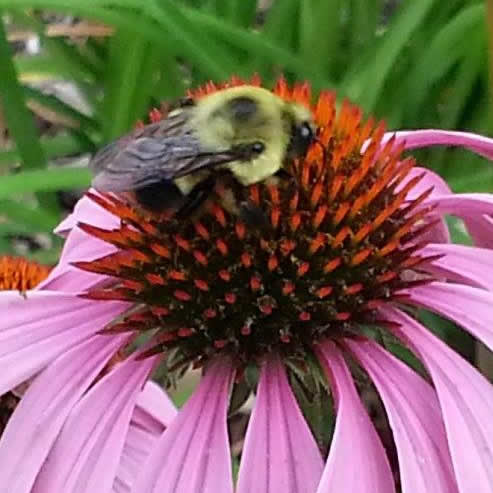
Garden Guests
Ten common visitors to your pollinator garden
Remember, a pollinator garden is a little different than the gardens that most of us are used to. You WANT your visitors to eat your garden!! So as those monarch caterpillars are busily munching away on your milkweeds, you needn’t fret – you can just smile and enjoy the show. Listed below are ten possible visitors to your garden – perhaps some, or all of them will pay you a visit!
Monarch Butterfly: A little milkweed will go a long way 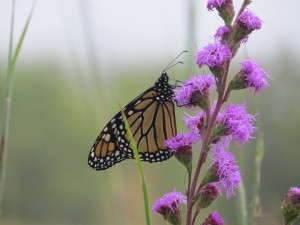 toward attracting this iconic species. It is the only plant monarch caterpillars will eat. September bloomers like Rough Blazingstar and New England Aster will provide nectar for the adult monarch’s long journey to Mexico!
toward attracting this iconic species. It is the only plant monarch caterpillars will eat. September bloomers like Rough Blazingstar and New England Aster will provide nectar for the adult monarch’s long journey to Mexico!
Black Swallowtail: Swallowtails are named after the tail on their 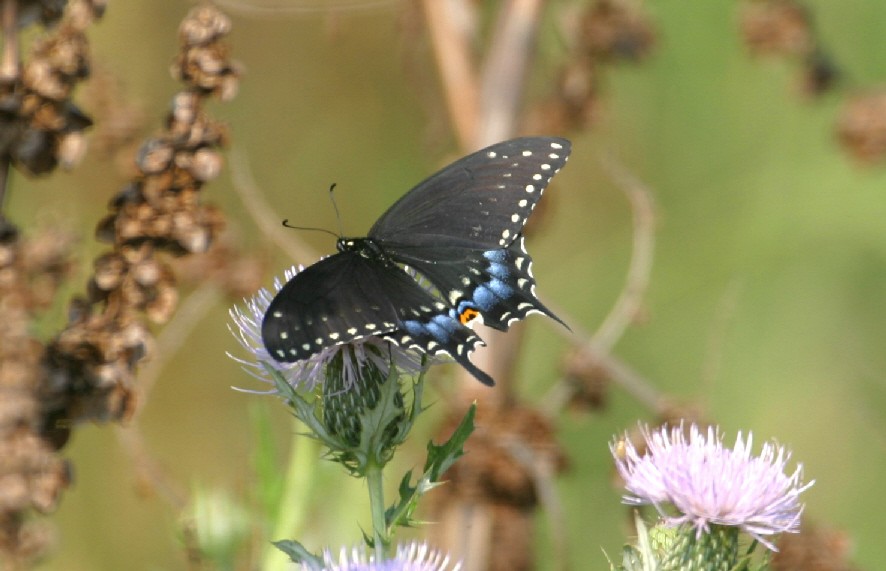 hindwings. All Swallowtail caterpillars have an orange “forked gland”, called the osmeterium. When in danger, the osmeterium, which looks like a snake’s tongue, releases a foul smell to repel predators. They favor plants that are in the carrot family.
hindwings. All Swallowtail caterpillars have an orange “forked gland”, called the osmeterium. When in danger, the osmeterium, which looks like a snake’s tongue, releases a foul smell to repel predators. They favor plants that are in the carrot family.
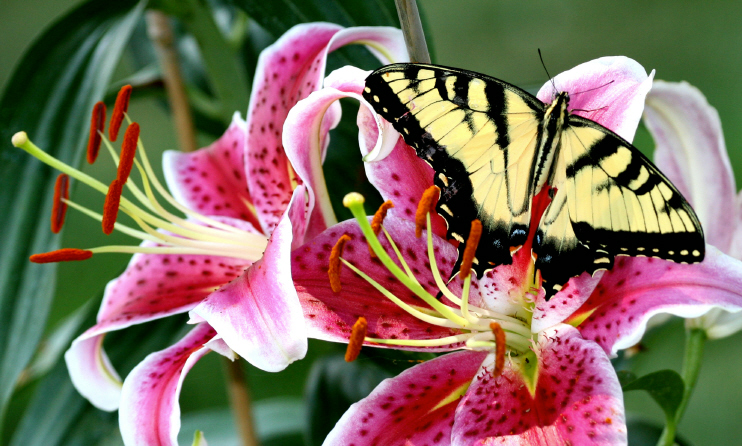 Eastern Tiger Swallowtail: This striking butterfly overwinters as a chrysalis (pupae). The caterpillar feeds on a variety of tree species. The male is yellow with black margins and black tiger-like strips on the front edge of the fore wing. Females can have two forms – one resembling the male; and the other mostly black.
Eastern Tiger Swallowtail: This striking butterfly overwinters as a chrysalis (pupae). The caterpillar feeds on a variety of tree species. The male is yellow with black margins and black tiger-like strips on the front edge of the fore wing. Females can have two forms – one resembling the male; and the other mostly black.
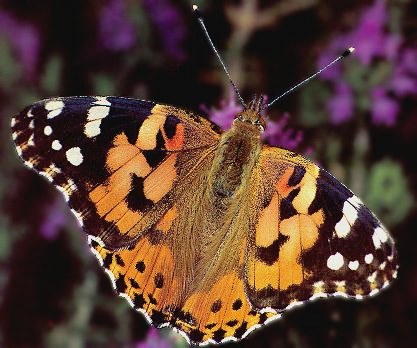 Painted Lady: One of the most widely distributed butterflies, found on all continents except Australia and Antarctica. Like the monarch, this is a migratory species. The larvae has many host plants but generally consume thistle species.
Painted Lady: One of the most widely distributed butterflies, found on all continents except Australia and Antarctica. Like the monarch, this is a migratory species. The larvae has many host plants but generally consume thistle species.
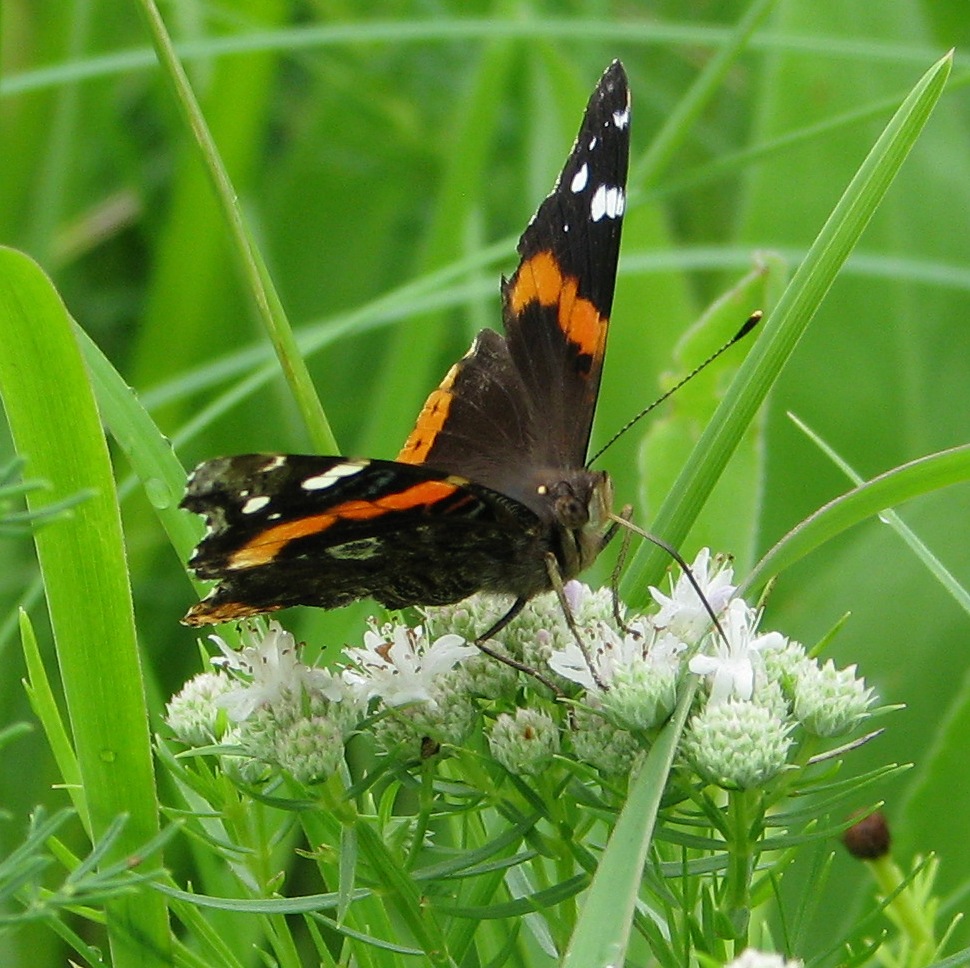 Red Admiral: This distinctive species has a black upper fore wing with a bright diagonal red band. The larvae consume nettles. They are very wary butterflies and are difficult to net.
Red Admiral: This distinctive species has a black upper fore wing with a bright diagonal red band. The larvae consume nettles. They are very wary butterflies and are difficult to net.
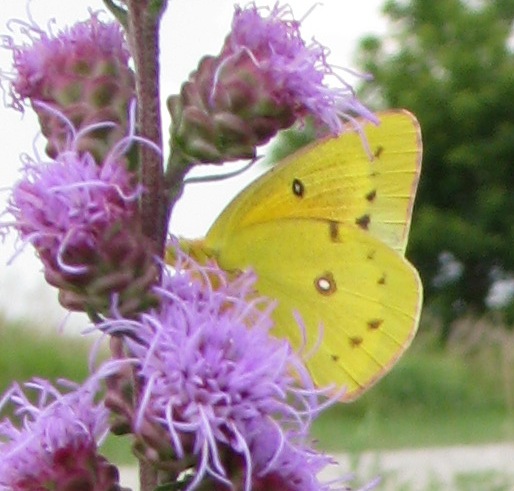 Sulphur Butterfly: There are several species of sulphur butterflies in Iowa. Most are yellow or yellow-orange in color and are very common and visible. The larvae of sulphurs tend to favor legumes.
Sulphur Butterfly: There are several species of sulphur butterflies in Iowa. Most are yellow or yellow-orange in color and are very common and visible. The larvae of sulphurs tend to favor legumes.
Native Bees: In the United States, there are over 4,000 species of native bees. These flower-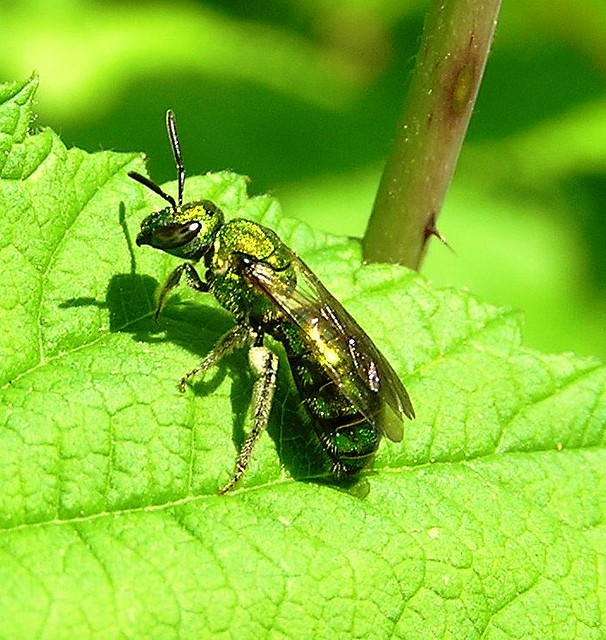 seeking pollen magnets purposefully visit flowers to collect pollen and nectar for food for themselves and their young. Other than bumble bees and sweat bees, the majority of our native bees are solitary Most excavate their nest tunnels in sunny patches of bare ground, while others seek out abandoned beetle burrows in dead tree trunks or branches.
seeking pollen magnets purposefully visit flowers to collect pollen and nectar for food for themselves and their young. Other than bumble bees and sweat bees, the majority of our native bees are solitary Most excavate their nest tunnels in sunny patches of bare ground, while others seek out abandoned beetle burrows in dead tree trunks or branches.
Ruby-throated hummingbird: Think red if you want to attract this 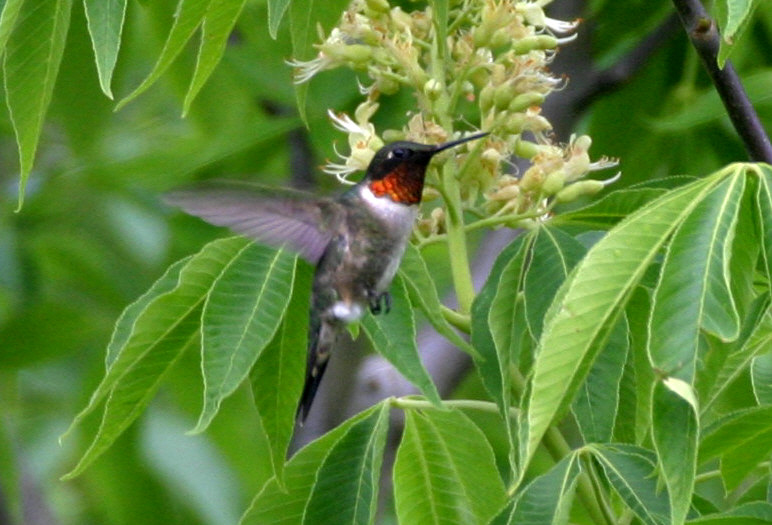 beloved bird to your garden. They love red flowers such as cardinal flower, and will readily come to artificial feeders as well. They are territorial and will chase each other away from feeding sites. They migrate to Central America in winter and can cross the Gulf of Mexico in a single flight!
beloved bird to your garden. They love red flowers such as cardinal flower, and will readily come to artificial feeders as well. They are territorial and will chase each other away from feeding sites. They migrate to Central America in winter and can cross the Gulf of Mexico in a single flight!
Bumble bee: Bumble bees are big, fuzzy insects with black and yellow coloration. These excellent 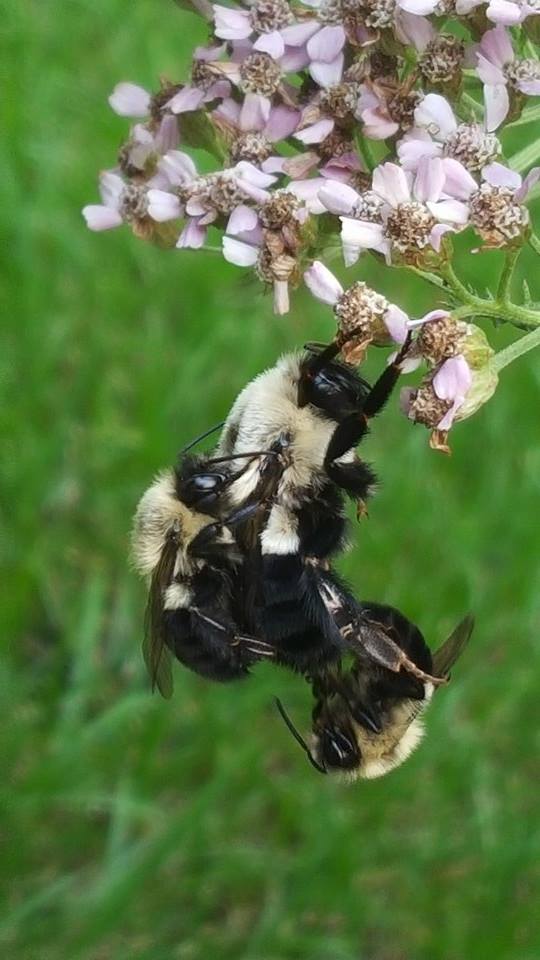 pollinators live in an underground colony where the adults care for the young (larvae) produced by a single queen In winter fertilized females move to hibernation sites in the shelter of loose bark, hollow trees or other dry, protected places, while the males and workers still in the colony die with frost or the first hard freeze.
pollinators live in an underground colony where the adults care for the young (larvae) produced by a single queen In winter fertilized females move to hibernation sites in the shelter of loose bark, hollow trees or other dry, protected places, while the males and workers still in the colony die with frost or the first hard freeze.
Honeybee: Few insect species have been studied more closely than 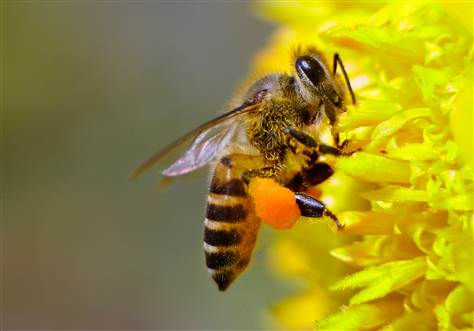 the honeybee. These amazing insects provide us with honey and wax, and play a critical role in pollinating many of our crops. A honeybee colony includes an egg-laying queen, male drones, and female worker bees that care for the hive and collect nectar and pollen.
the honeybee. These amazing insects provide us with honey and wax, and play a critical role in pollinating many of our crops. A honeybee colony includes an egg-laying queen, male drones, and female worker bees that care for the hive and collect nectar and pollen.
